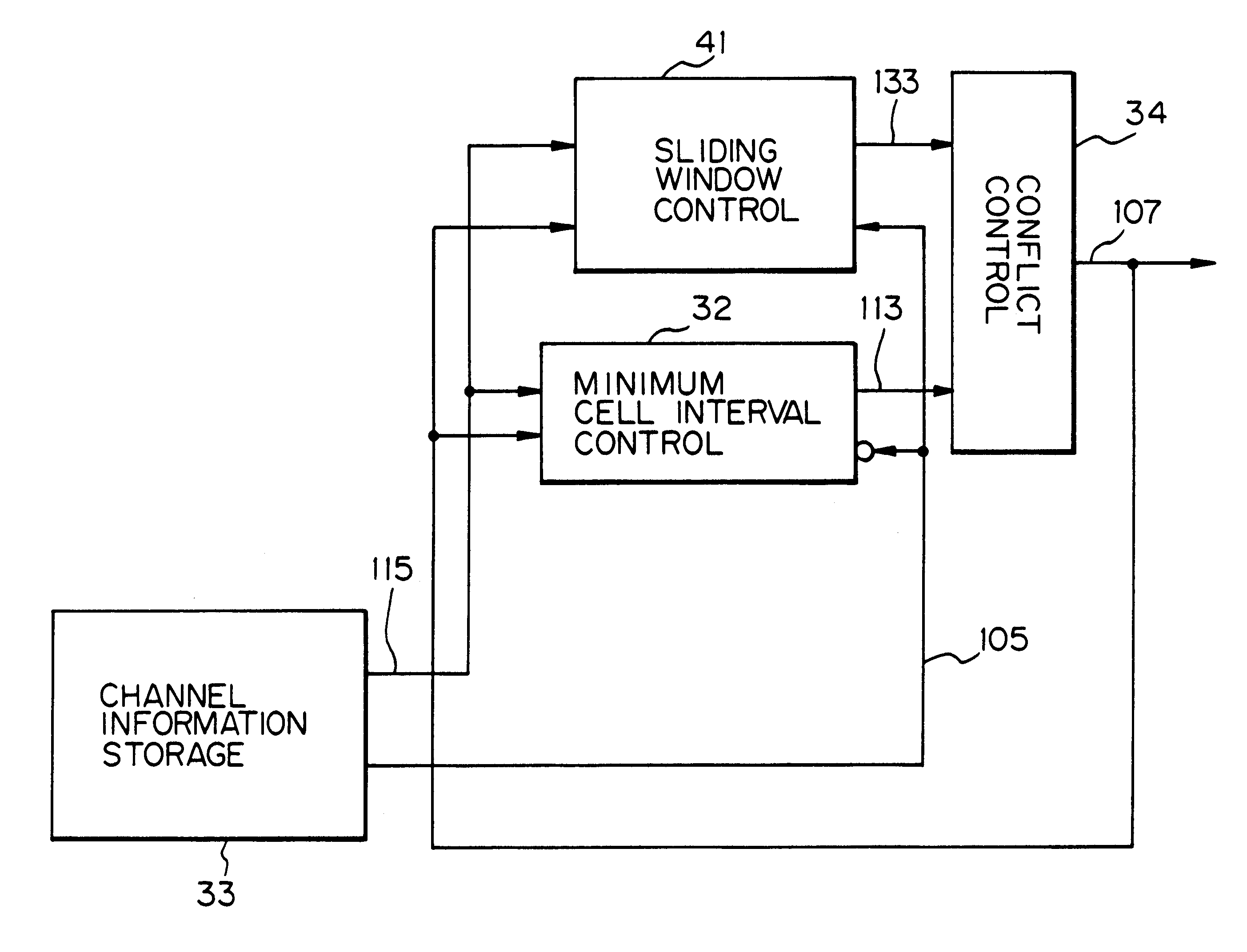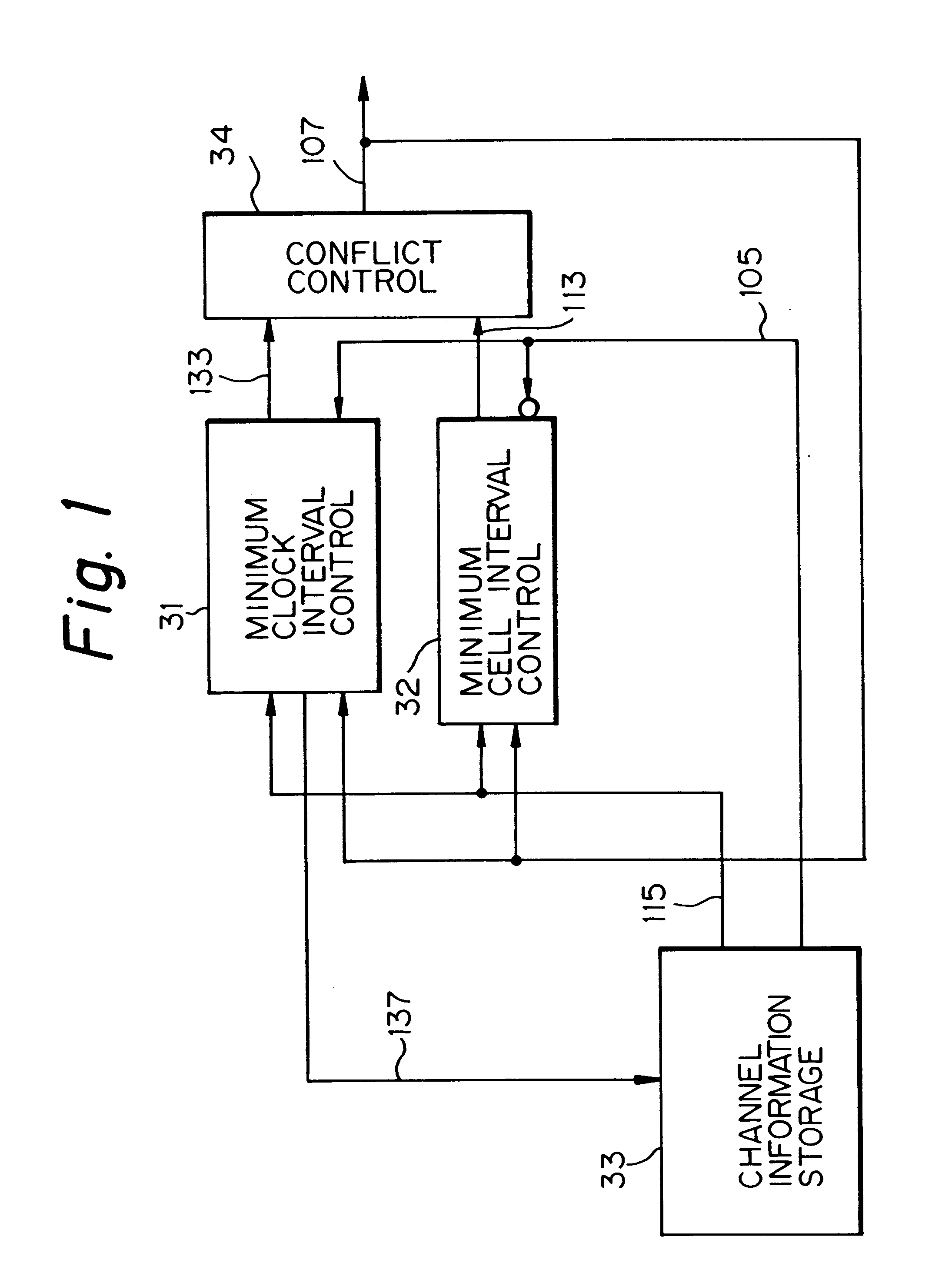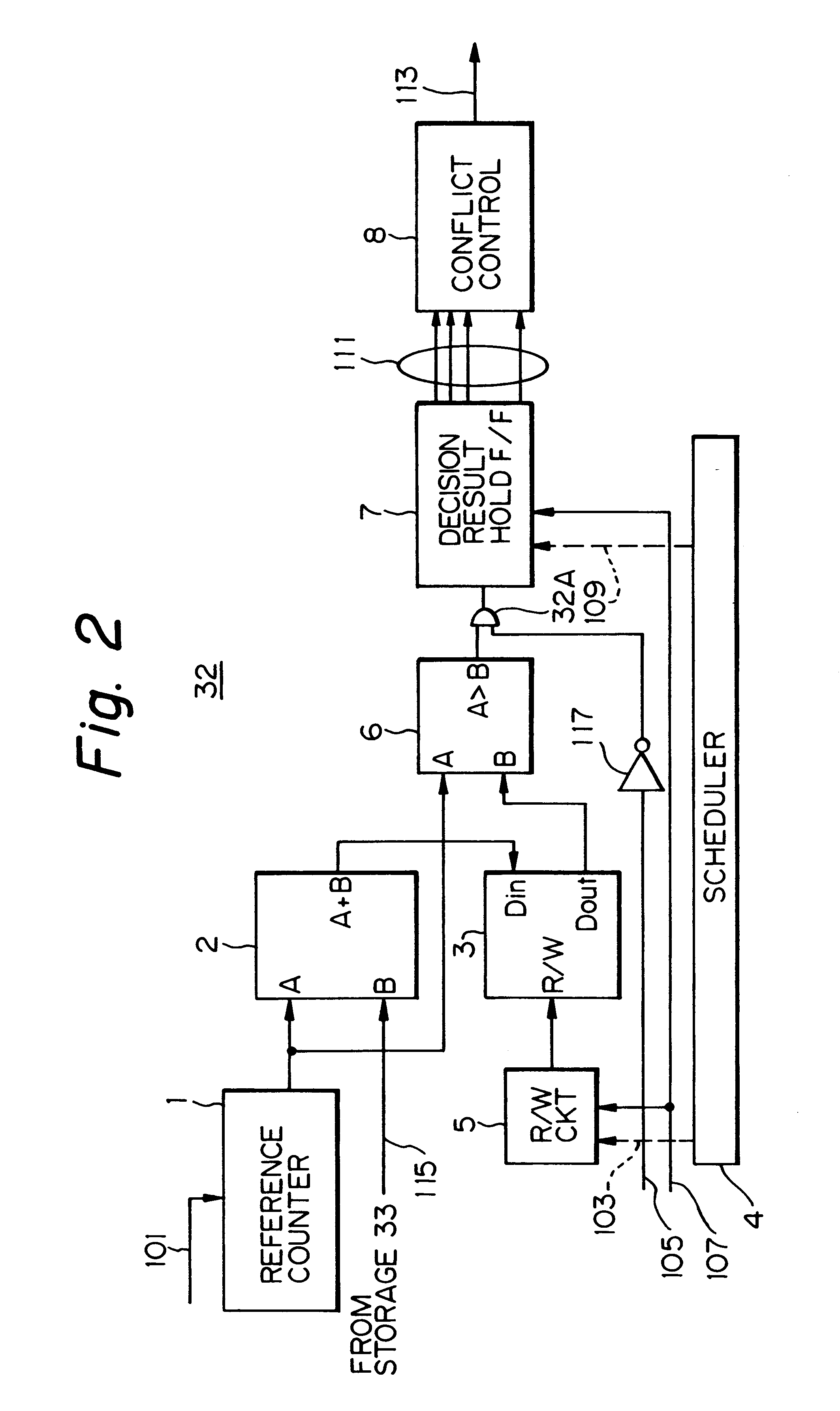Data transmission rate control using a transmission control scheme suitable for subbands forming an entire band
- Summary
- Abstract
- Description
- Claims
- Application Information
AI Technical Summary
Benefits of technology
Problems solved by technology
Method used
Image
Examples
first embodiment
the data transmission rate control system in accordance with the present invention, which will now be described, is applied to a cell rate control system in a cell transfer type of telecommunications system. This embodiment is adapted to divide the controlled band into an upper band and a lower band so that the control scheme is changed in accordance with the band in such a manner that the transmission timing of input cells belonging to the upper band is controlled by the clock-based minimum cell interval control scheme, while that of input cells belonging to the lower band is controlled by the cell-based minimum cell interval control scheme.
With reference to FIG. 1, which shows in a block diagram the cell rate control system associated with the first embodiment, the cell rate control system generally includes four functional blocks: a clock-based minimum cell interval control 31; a cell-based minimum cell interval control 32; a channel information memory 33; and a conflict control ...
embodiment 2
An alternative, or second, embodiment of a data transmission rate control unit in accordance with the present invention will be described referring to the drawings. In this embodiment, the data transmission rate control unit is applied to the cell rate control unit in a cell transfer communications system. In the cell rate control unit in accordance with the second embodiment, the control band is also divided into the upper and lower bands, to which different control schemes are applied. In the instant embodiment, however, the sliding window control scheme is assigned to the upper band with a wider control bandwidth, and the cell-based minimum cell interval control scheme is assigned to the lower band with a narrower bandwidth, thereby making good use of the advantages of the respective control methods.
This embodiment is described with reference to FIG. 5, which shows in a block diagram the cell rate control unit relating to the second embodiment. The cell rate control unit includes...
PUM
 Login to View More
Login to View More Abstract
Description
Claims
Application Information
 Login to View More
Login to View More - R&D
- Intellectual Property
- Life Sciences
- Materials
- Tech Scout
- Unparalleled Data Quality
- Higher Quality Content
- 60% Fewer Hallucinations
Browse by: Latest US Patents, China's latest patents, Technical Efficacy Thesaurus, Application Domain, Technology Topic, Popular Technical Reports.
© 2025 PatSnap. All rights reserved.Legal|Privacy policy|Modern Slavery Act Transparency Statement|Sitemap|About US| Contact US: help@patsnap.com



